Abstract
This study reports the results of an experiment with 4 female 5-year-old children, in which the verbal behavior of the children (talking to themselves) was studied under two conditions—an anthropomorphic toy condition and a nonanthropomorphic toy condition. The anthropomorphic condition consisted of three-dimensional toys such as dolls, stuffed animals, and figurines. The nonanthropomorphic toy condition consisted of two-dimensional materials such as puzzles, coloring books, and story books. The independent variables were the toy conditions. The dependent variables were verbal-behavior units; these included mands, tacts, intraverbals, autoclitics, and conversational units. The conditions were compared using a multiple schedule design. The results showed that more total units occurred in the anthropomorphic toy condition than in the nonanthropomorphic toy condition and that conversational units occurred in the anthropomorphic condition only. Consistent with Skinner's (1957) hypothesis, the children acted as both speaker and listener when emitting verbal behavior to themselves in the anthropomorphic condition.
Keywords: verbal behavior, conversational units, mands, tacts, intraverbals, self-talk, speaker/listener control, children
Full text
PDF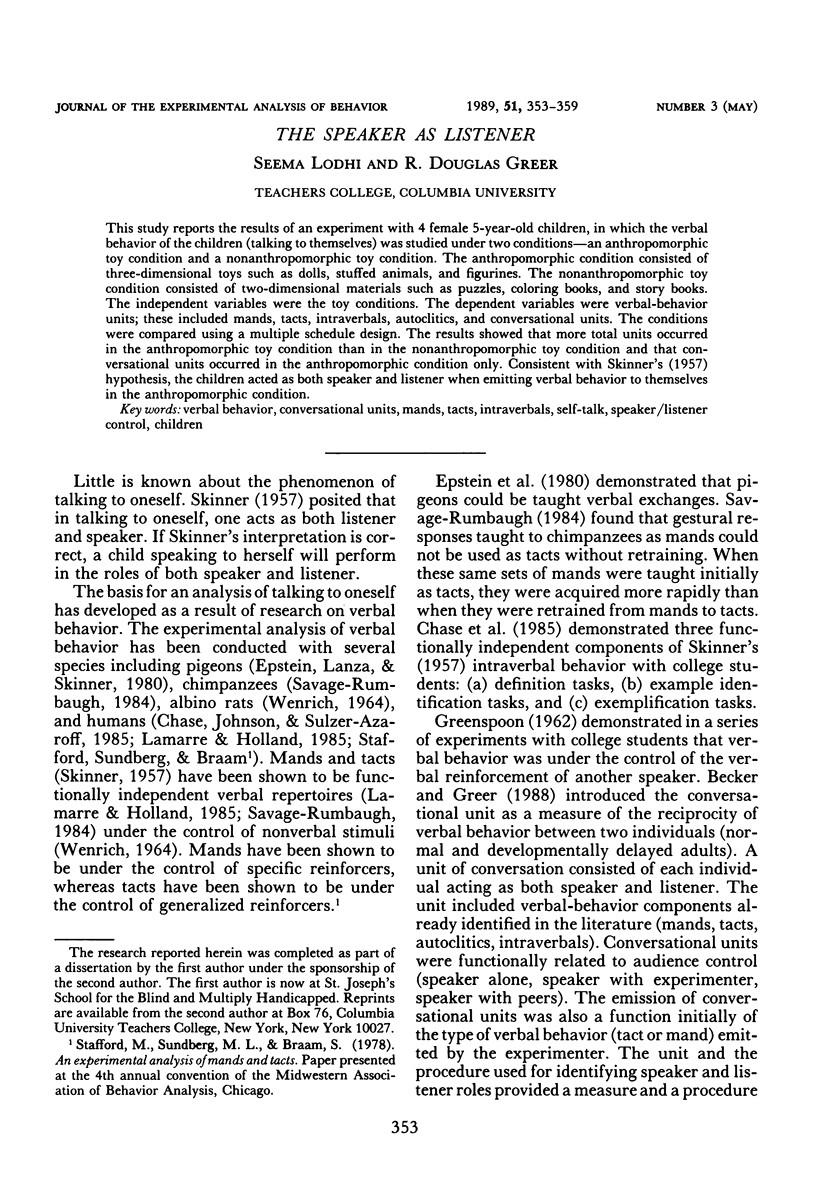
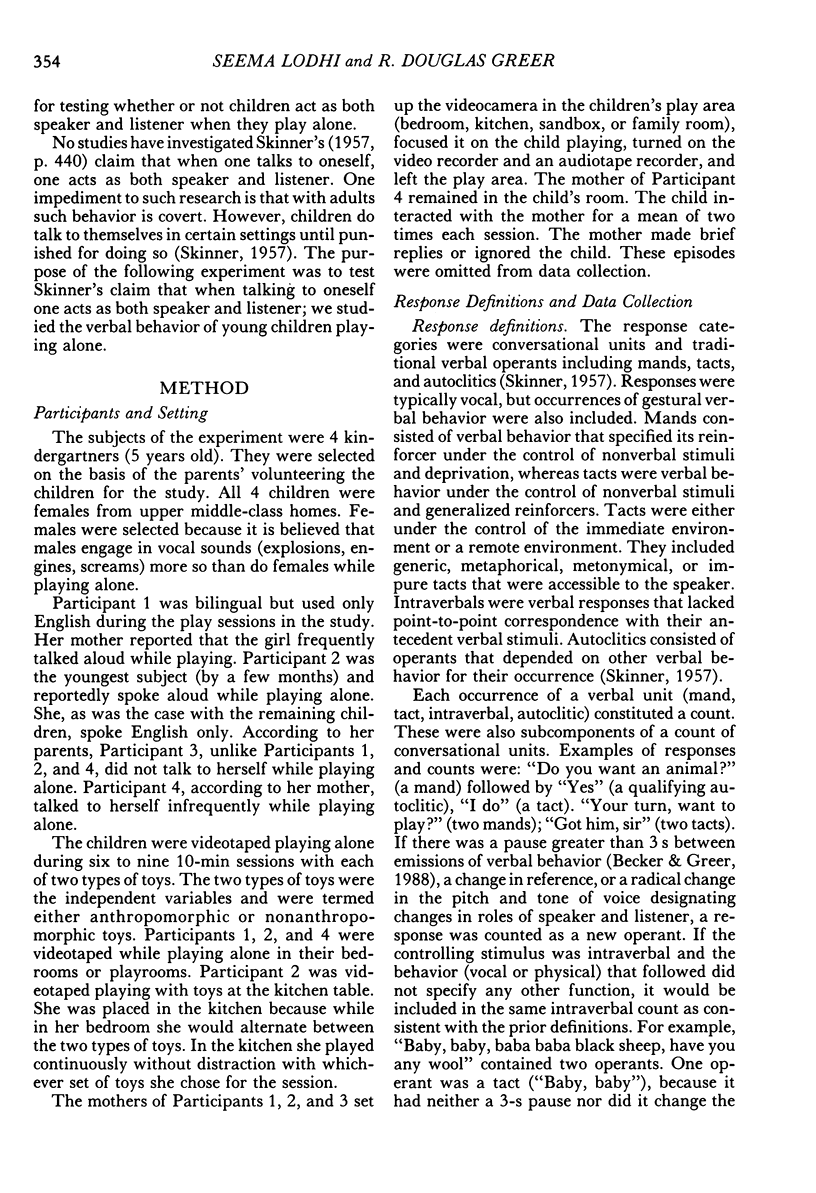
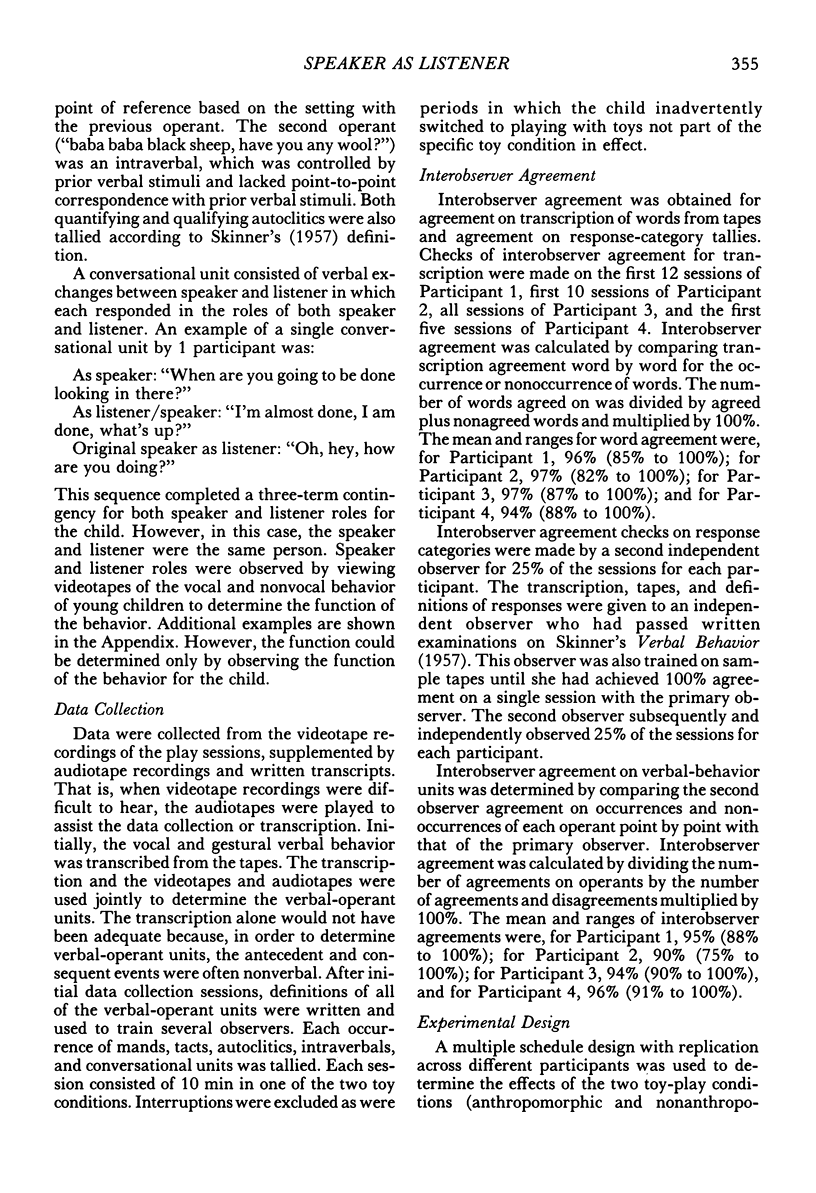
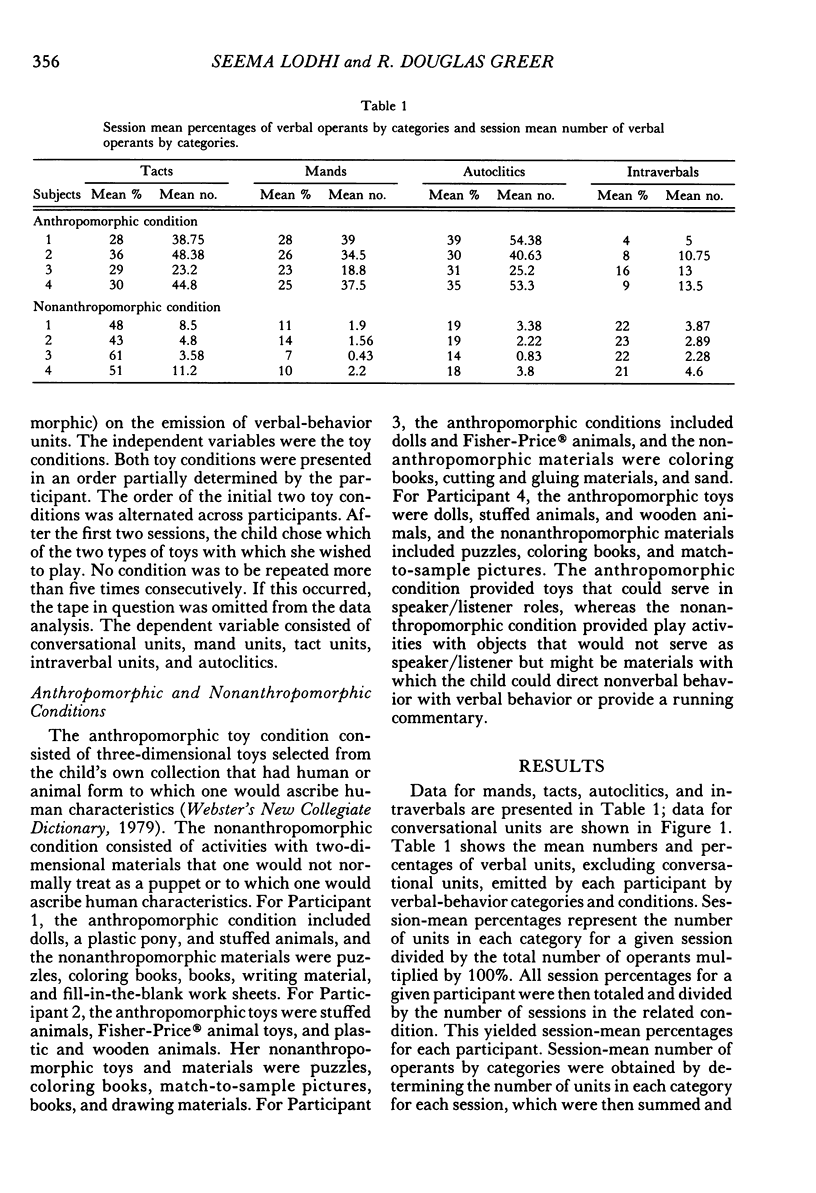
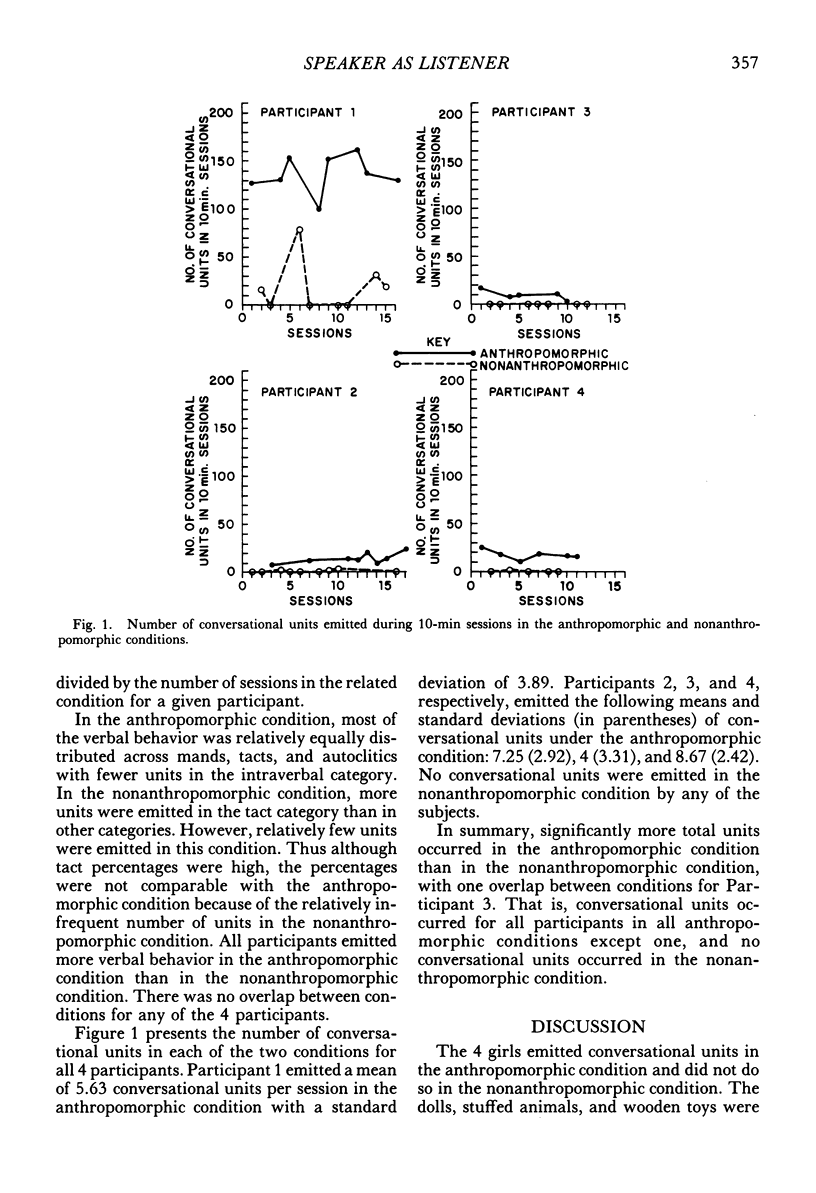
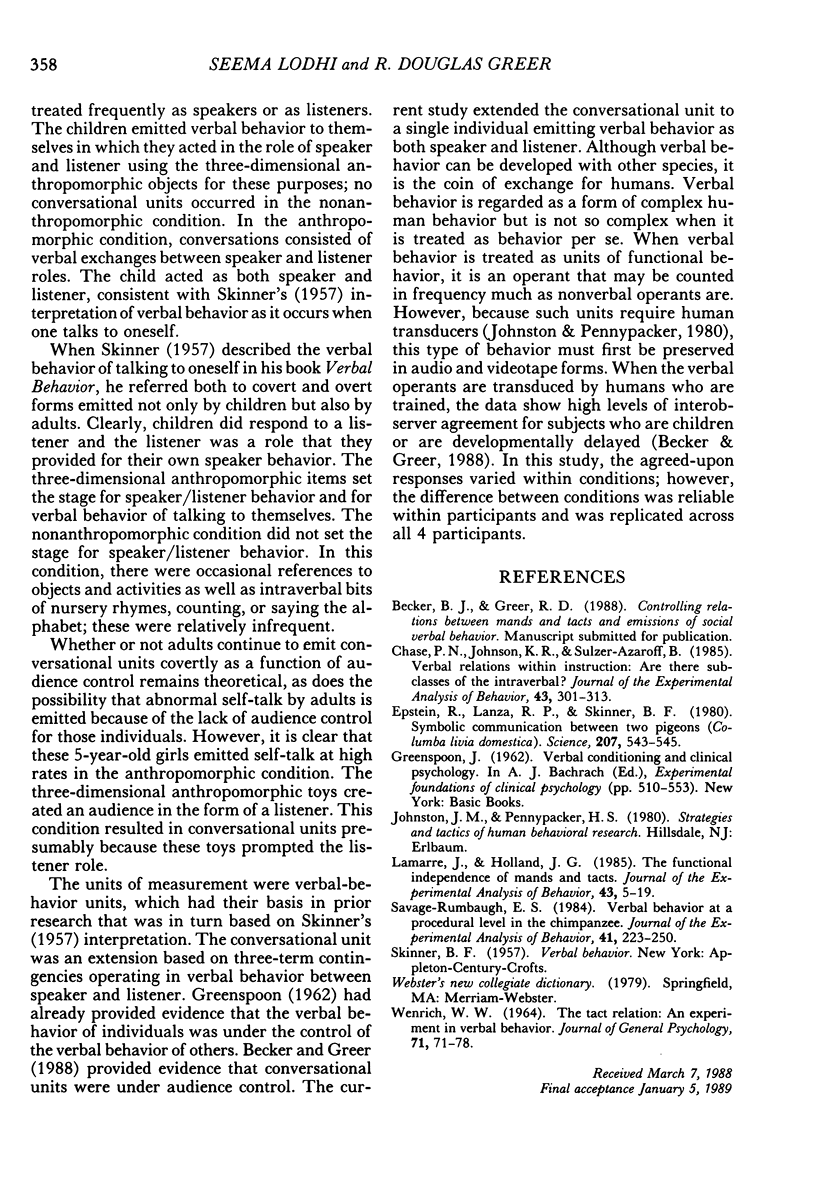
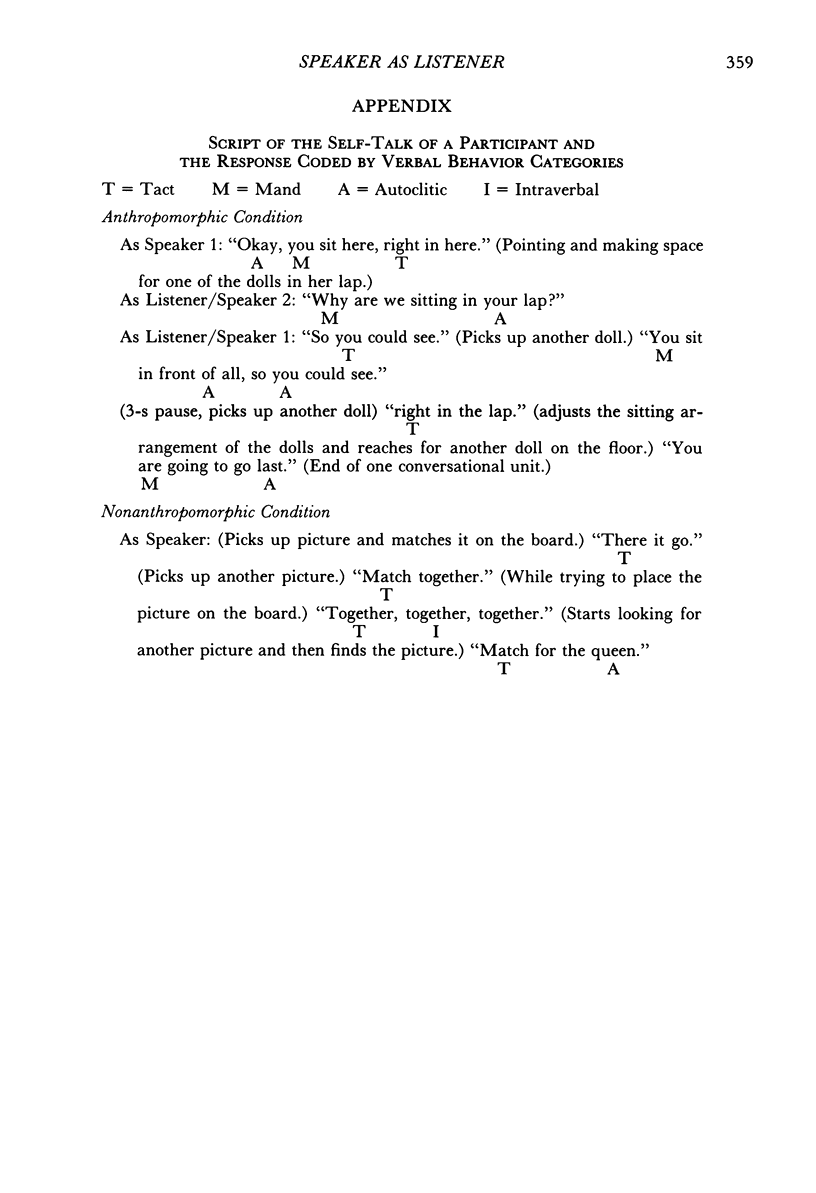
Selected References
These references are in PubMed. This may not be the complete list of references from this article.
- Chase P. N., Johnson K. R., Sulzer-Azaroff B. Verbal relations within instruction: Are there subclasses of the intraverbal? J Exp Anal Behav. 1985 May;43(3):301–313. doi: 10.1901/jeab.1985.43-301. [DOI] [PMC free article] [PubMed] [Google Scholar]
- Epstein R., Lanza R. P., Skinner B. F. Symbolic Communication Between Two Pigeons, (Columba livia domestica). Science. 1980 Feb 1;207(4430):543–545. doi: 10.1126/science.207.4430.543. [DOI] [PubMed] [Google Scholar]
- Lamarre J., Holland J. G. The functional independence of mands and tacts. J Exp Anal Behav. 1985 Jan;43(1):5–19. doi: 10.1901/jeab.1985.43-5. [DOI] [PMC free article] [PubMed] [Google Scholar]
- Savage-Rumbaugh E. S. Verbal behavior at a procedural level in the chimpanzee. J Exp Anal Behav. 1984 Mar;41(2):223–250. doi: 10.1901/jeab.1984.41-223. [DOI] [PMC free article] [PubMed] [Google Scholar]
- WENRICH W. W. THE TACT RELATION: AN EXPERIMENT IN VERBAL BEHAVIOR. J Gen Psychol. 1964 Jul;71:71–78. doi: 10.1080/00221309.1964.9710290. [DOI] [PubMed] [Google Scholar]


